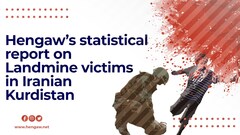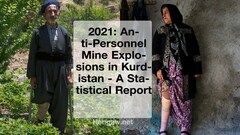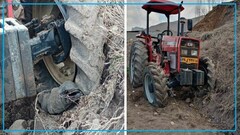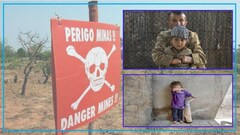The Islamic Republic of Iran does not incorporate into the Ottawa Convention; the landmine explosions continue to jeopardize Kurdish citizens’ lives
The explosion of landmines remaining from the 8-year war between Iran and Iraq, as well as the mines planted by the IRGC in recent years, continue to ...
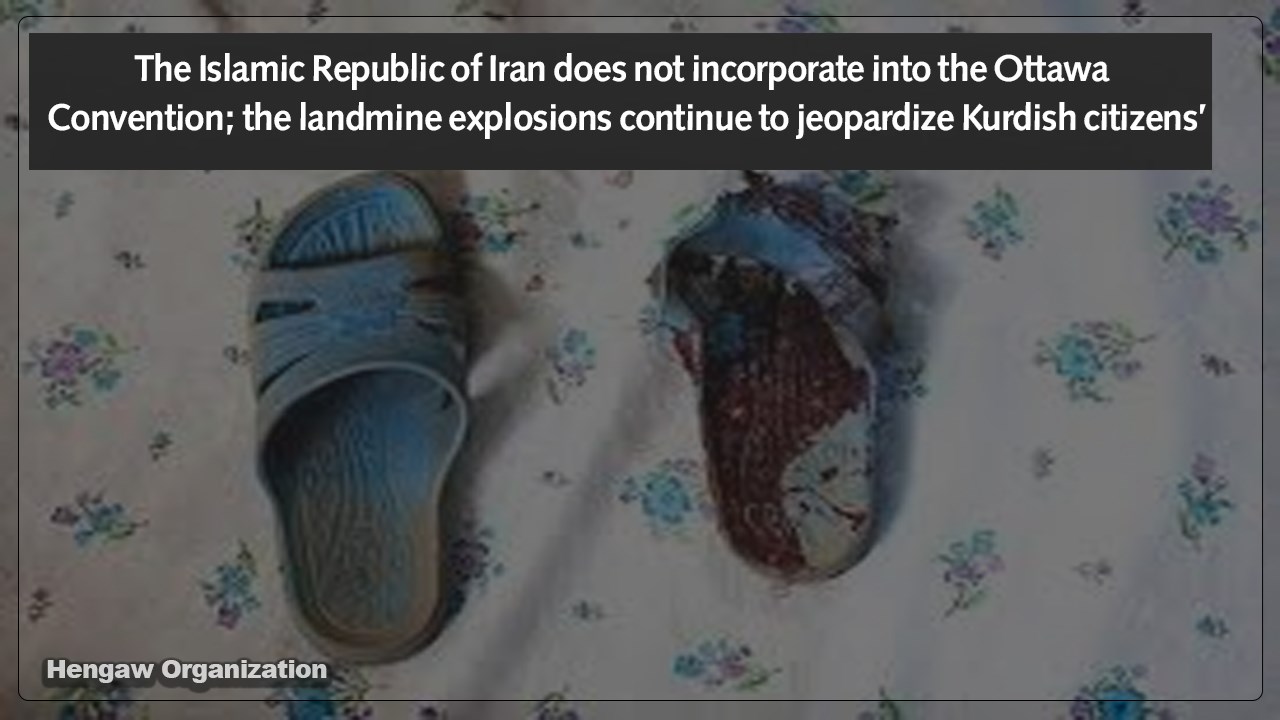
Hengaw: Thursday, January 19, 2023
The explosion of landmines remaining from the 8-year war between Iran and Iraq, as well as the mines planted by the IRGC in recent years, continue to jeopardize citizens’ lives in Kurdistan, and more than 30% of the victims last year were children.
Based on the statistics registered in the statistics and documents center of the Hengaw Organization for Human Rights, in 2022, at least 36 citizens in the border areas of Kurdistan were killed or injured due to the explosion of landmines and explosives left over from the 8-year war between Iran and Iraq and newly planted mines by the IRGC.
These numbers have decreased by 7 cases, equivalent to 16%, compared to 2021, in which 43 cases were recorded.
Out of the total of 36 people who were targeted, six people lost their lives and 30 others were injured or mutilated. In the year 2021, 15 citizens were killed and 28 others were injured.
Based on the statistics from Hengaw, 30.5% of all victims (11 cases) in 2022 were children under the age of 18.
Last year, a 12-year-old child with the identity of Amir Kian Rahmati was killed by a landmine explosion on the borders of Dehloran, and 10 other children were injured on the borders of Urmia, Dehloran, Mehran, Baneh, and Qasr-e-Shirin. Also, at least 5 women were injured in the cities of Urmia, Dehloran (3 cases), and Saqqez.
Separation of victims by province
Last year, most of the victims of landmine explosions were registered on the borders of the Ilam and Kurdistan provinces, with 14 and 11 cases, respectively.
Kurdistan province (Sanandaj): 11 victims, 2 dead, and 9 wounded.
Ilam province: 14 victims, 2 dead, and 12 wounded.
West Azarbaijan Province (Urmia): 5 victims, 1 dead, and 4 wounded.
Kermanshah province: 6 victims, 1 killed, and 5 injured.
Separation of mine victims according to social class
Most of the victims of landmine explosions in Kurdistan last year were from the working class; 21 Kolbers, drivers, shepherds, and workers were killed or injured.
Worker: 21 cases (2 killed and 19 injured).
Military: 4 cases (2 killed and 2 wounded).
Civil: 11 cases (2 dead and 9 wounded).
Although landmines are not listed as absolute prohibitions in customary international law, there are restrictions to minimize their effects. For example, the parties to the conflict should keep the map of the minefields or clear these fields at the end of the conflict to protect the civilians.
In this case, the Ottawa Convention requires governments to refrain from the production, stockpiling, and transfer of anti-personnel mines; unfortunately, the Iranian government has not yet joined this convention despite countless victims everywhere.
In this regard, Faraz Firouzi, a lawyer and legal consultant for Hengaw Organization, believes that the main reason for Iran's non-adherence to the Ottawa Convention is the border disputes between Iran and Iraq, which the Iranian government has always done with the justification of protecting the borders and fighting the opposition parties. The Iranian government refuses to adhere to international obligations and plays with the lives of its citizens.
In this regard, Firouzi stated: "Based on the research conducted by the Red Cross Organization to develop customary rules governing humanitarian rights, several restrictions were defined as customary rights in Rules Nos. 81, 82, and 83 regarding landmines."
- When using, take the necessary precautions to avoid human casualties.
- The party that uses the landmines must mark the location of their placement.
- At the end of the active hostilities, the party that uses the landmines must provide facilities for cleansing the landmines.
However, the Iranian and Iraqi governments each refuse to fulfill their obligations according to customary international law.



